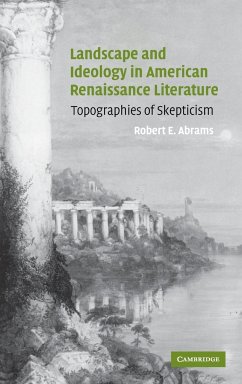In this provocative and original study, Robert E. Abrams argues that in mid-nineteenth-century American writing, new concepts of space and landscape emerge. Abrams explores the underlying frailty of a sense of place in American literature of this period. Sense of place, Abrams proposes, is culturally constructed. It is perceived through the lens of maps, ideas of nature, styles of painting, and other cultural frameworks that can contradict one another or change dramatically over time. Abrams contends that mid-century American writers ranging from Henry D. Thoreau to Margaret Fuller are especially sensitive to instability of sense of place across the span of American history, and that they are ultimately haunted by an underlying placelessness. Many books have explored the variety of aesthetic conventions and ideas that have influenced the American imagination of landscape, but this study introduces the idea of placeless into the discussion, and suggests that it has far-reaching consequences.
Bitte wählen Sie Ihr Anliegen aus.
Rechnungen
Retourenschein anfordern
Bestellstatus
Storno









